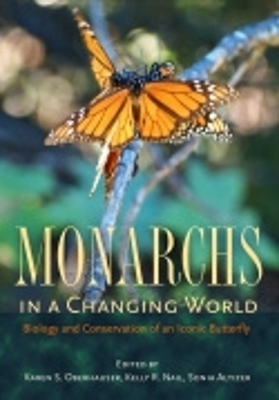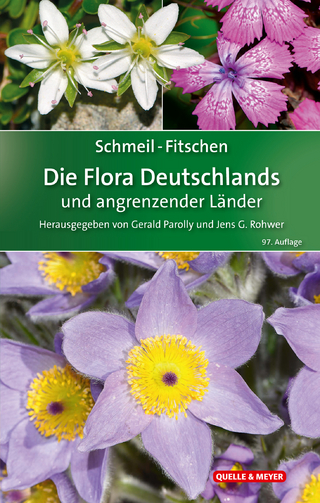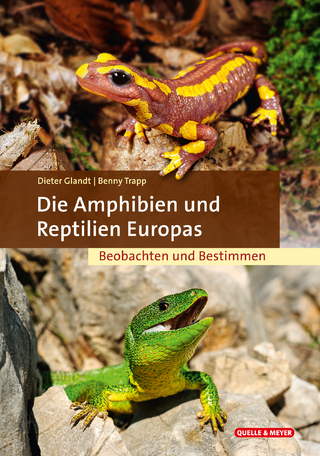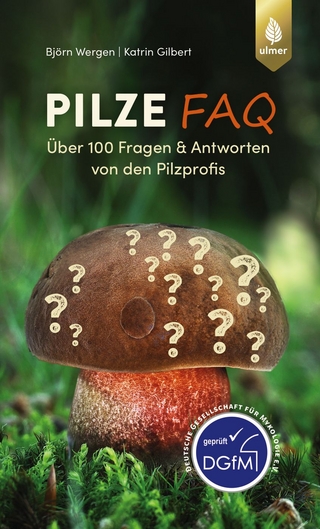
Monarchs in a Changing World
Cornell University Press (Verlag)
978-0-8014-5315-1 (ISBN)
Monarch migration, behavior, and chemical ecology have been studied for decades. Yet many aspects of monarch biology have come to light in only the past few years. These aspects include questions regarding large-scale trends in monarch population sizes, monarch interactions with pathogens and insect predators, and monarch molecular genetics and large-scale evolution. A growing number of current research findings build on the observations of citizen scientists, who monitor monarch migration, reproduction, survival, and disease. Monarchs face new threats from humans as they navigate a changing landscape marked by deforestation, pesticides, genetically modified crops, and a changing climate, all of which place the future of monarchs and their amazing migration in peril.
To meet the demand for a timely synthesis of monarch biology, conservation and outreach, Monarchs in a Changing World summarizes recent developments in scientific research, highlights challenges and responses to threats to monarch conservation, and showcases the many ways that monarchs are used in citizen science programs, outreach, and education. It examines issues pertaining to the eastern and western North American migratory populations, as well as to monarchs in South America, the Pacific and Caribbean Islands, and Europe. The target audience includes entomologists, population biologists, conservation policymakers, and K–12 teachers.
Karen S. Oberhauser is a Professor in the Department of Fisheries, Wildlife and Conservation Biology at the University of Minnesota. She is coeditor of The Monarch Butterfly: Biology and Conservation, also from Cornell. Kelly R. Nail is a PhD candidate in the Conservation Biology Program at the University of Minnesota. Sonia Altizer is Professor and Associate Dean of Academic Affairs at the Odum School of Ecology, University of Georgia. She is coauthor of Infectious Diseases in Primates: Behavior, Ecology and Evolution.
Part One. Model Programs for Citizen Science, Education, and Conservation: An Overview
Karen S. Oberhauser1. Environmental Education and Monarchs: Reaching across Disciplines, Generations, and Nations
Elisabeth Young-Isebrand, Karen S. Oberhauser, Kim Bailey, Sonya Charest, Brian Hayes, Elizabeth Howard, Jim Lovett, Susan Meyers, Erik Mollenhauer, Eneida B. Montesiños-Patino, Ann Ryan, Orley R. Taylor, and Rocío Treviño2. Contributions to Monarch Biology and Conservation through Citizen Science: Seventy Years and Counting
Karen S. Oberhauser, Leslie Ries, Sonia Altizer, Rebecca V. Batalden, Janet Kudell-Ekstrum, Mark Garland, Elizabeth Howard, Sarina Jepsen, Jim Lovett, Mía Monroe, Gail Morris, Eduardo Rendón-Salinas, Richard G. RuBino, Ann Ryan, Orley R. Taylor, Rocío Treviño, Francis X. Villablanca, and Dick Walton3. Monarch Habitat Conservation across North America: Past Progress and Future Needs
Priya C. Shahani, Guadalupe del Río Pesado, Phil Schappert, and Eligio García SerranoPart Two. Monarchs as Herbivores, Prey, and Hosts: An Overview
Jacobus C. de Roode4. Macroevolutionary Trends in the Defense of Milkweeds against Monarchs: Latex, Cardenolides, and Tolerance of Herbivory
Anurag A. Agrawal, Jared G. Ali, Sergio Rasmann, and Mark Fishbein5. Invertebrate Natural Enemies and Stage-Specific Mortality Rates of Monarch Eggs and Larvae
Alma De Anda and Karen S. Oberhauser6. Lacewings, Wasps, and Flies—Oh My: Insect Enemies Take a Bite out of Monarchs
Karen S. Oberhauser, Michael Anderson, Sophia Anderson, Wendy Caldwell, Alma De Anda, Mark Hunter, Matthew C. Kaiser, and Michelle J. Solensky7. Monarchs and Their Debilitating Parasites: Immunity, Migration, and Medicinal Plant Use
Sonia Altizer and Jacobus C. de RoodePart Three. Monarchs in a Changing Climate: An Overview
Kelly R. Nail and Karen S. Oberhauser8. What's Too Hot and What’s Too Cold? Lethal and Sublethal Effects of Extreme Temperatures on Developing Monarchs
Kelly R. Nail, Rebecca V. Batalden, and Karen S. Oberhauser9. Microclimatic Protection of Overwintering Monarchs Provided by Mexico’s High-Elevation Oyamel Fir Forests: A Review
Ernest H. Williams and Lincoln P. Brower10. Effect of the 2010–2011 Drought on the Lipid Content of Monarchs Migrating through Texas to Overwintering Sites in Mexico
Lincoln P. Brower, Linda S. Fink, Ridlon J. Kiphart, Victoria Pocius, Raúl R. Zubieta, and M. Isabel Ramírez11. Estimating the Climate Signal in Monarch Population Decline: No Direct Evidence for an Impact of Climate Change?
Myron P. Zalucki, Lincoln P. Brower, Stephen B. Malcolm, and Benjamin H. SlagerPart Four. Conserving North American Monarch Butterflies: An Overview
Lincoln P. Brower and Linda S. Fink12. Understanding and Conserving the Western North American Monarch Population
Sarina Jepsen and Scott Hoffman Black13. Threats to the Availability of Overwintering Habitat in the Monarch Butterfly Biosphere Reserve: Land Use and Climate Change
M. Isabel Ramírez, Cuauhtémoc Sáenz-Romero, Gerald Rehfeldt, and Lidia Salas-Canela14. Monarch Butterflies and Agriculture
John M. Pleasants15. Fires and Fire Management in the Monarch Butterfly Biosphere Reserve
Héctor Martínez-Torres, Mariana Cantú-Fernández, M. Isabel Ramírez, and Diego R. Pérez-Salicrup16. Project Milkweed: A Strategy for Monarch Habitat Conservation
Brianna Borders and Eric Lee-Mäder17. Grassland and Roadside Management Practices Affect Milkweed Abundance and Opportunities for Monarch Recruitment
Kristen A. Baum and Elisha K. MuellerPart Five. New Perspectives on Monarch Migration, Evolution, and Population Biology: An Overview
Andrew K. Davis and Sonia Altizer18. Tracking the Fall Migration of Eastern Monarchs with Journey North Roost Sightings: New Findings about the Pace of Fall Migration
Elizabeth Howard and Andrew K. Davis19. Potential Changes in Eastern North American Monarch Migration in Response to an Introduced Milkweed, Asclepias curassavica
Rebecca V. Batalden and Karen S. Oberhauser20. Migration and Host Plant Use by the Southern Monarch, Danaus erippus
Stephen B. Malcolm and Benjamin H. Slager21. Monarchs in the Mist: New Perspectives on Monarch Distribution in the Pacific Northwest
Robert Michael Pyle22. Monarchs across the Atlantic Ocean: What’s Happening on the Other Shore?
Juan Fernández-Haeger, Diego Jordano, and Myron P. Zalucki23. Unraveling the Mysteries of Monarch Migration and Global Dispersal through Molecular Genetic Techniques
Amanda A. Pierce, Sonia Altizer, Nicola L. Chamberlain, Marcus R. Kronforst, and Jacobus C. de Roode24. Connecting Eastern Monarch Population Dynamics across Their Migratory Cycle
Leslie Ries, Douglas J. Taron, Eduardo Rendón-Salinas, and Karen S. OberhauserReferences
Contributors
Index
| Zusatzinfo | 16 Plates, color |
|---|---|
| Verlagsort | Ithaca |
| Sprache | englisch |
| Maße | 178 x 254 mm |
| Gewicht | 1361 g |
| Themenwelt | Sachbuch/Ratgeber ► Natur / Technik ► Naturführer |
| Naturwissenschaften ► Biologie ► Ökologie / Naturschutz | |
| Naturwissenschaften ► Biologie ► Zoologie | |
| ISBN-10 | 0-8014-5315-1 / 0801453151 |
| ISBN-13 | 978-0-8014-5315-1 / 9780801453151 |
| Zustand | Neuware |
| Haben Sie eine Frage zum Produkt? |
aus dem Bereich


